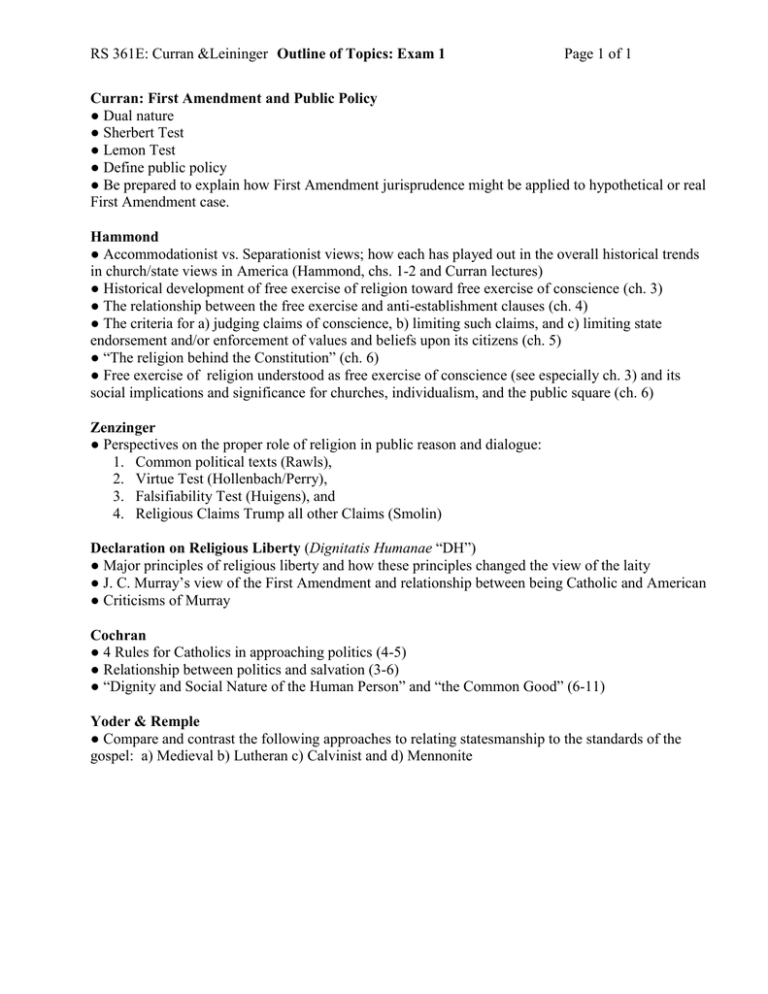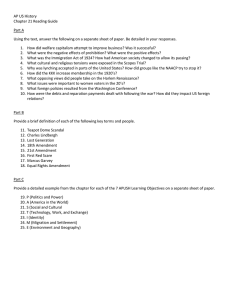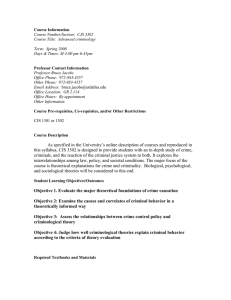Outline of Topics: Exam 1 Page 1 of 1 ● Dual nature
advertisement

RS 361E: Curran &Leininger Outline of Topics: Exam 1 Page 1 of 1 Curran: First Amendment and Public Policy ● Dual nature ● Sherbert Test ● Lemon Test ● Define public policy ● Be prepared to explain how First Amendment jurisprudence might be applied to hypothetical or real First Amendment case. Hammond ● Accommodationist vs. Separationist views; how each has played out in the overall historical trends in church/state views in America (Hammond, chs. 1-2 and Curran lectures) ● Historical development of free exercise of religion toward free exercise of conscience (ch. 3) ● The relationship between the free exercise and anti-establishment clauses (ch. 4) ● The criteria for a) judging claims of conscience, b) limiting such claims, and c) limiting state endorsement and/or enforcement of values and beliefs upon its citizens (ch. 5) ● “The religion behind the Constitution” (ch. 6) ● Free exercise of religion understood as free exercise of conscience (see especially ch. 3) and its social implications and significance for churches, individualism, and the public square (ch. 6) Zenzinger ● Perspectives on the proper role of religion in public reason and dialogue: 1. Common political texts (Rawls), 2. Virtue Test (Hollenbach/Perry), 3. Falsifiability Test (Huigens), and 4. Religious Claims Trump all other Claims (Smolin) Declaration on Religious Liberty (Dignitatis Humanae “DH”) ● Major principles of religious liberty and how these principles changed the view of the laity ● J. C. Murray’s view of the First Amendment and relationship between being Catholic and American ● Criticisms of Murray Cochran ● 4 Rules for Catholics in approaching politics (4-5) ● Relationship between politics and salvation (3-6) ● “Dignity and Social Nature of the Human Person” and “the Common Good” (6-11) Yoder & Remple ● Compare and contrast the following approaches to relating statesmanship to the standards of the gospel: a) Medieval b) Lutheran c) Calvinist and d) Mennonite

